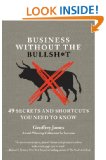Blogging for Business B2B or B2C – the Basics Remain the Same

Earlier this week, I discussed personal, “Can’t-Leave-the-House-Without-It” – type blog content writing, inviting readers’ personal involvement in the subject. The question is: does that very personalized type of content work as well in business-to-business marketing?
Is business-to-business marketing really different from business-to-consumer? Masterful Marketing.com’s blogger Debra Murphy certainly thinks so, listing at least four key differences:
- B2B has a longer sales cycle
- B2B is multi-step selling
- B2B depends on awareness-building educational activities
- B2B buyers make more “rational” decisions based on business value
As more and more businesses are beginning to call on Say It For You to help them get their message out to business buyers, I don’t perceive that the differences between B2B and B2C are all that great. After all, the process involved for the provider of products and services is the same – understanding your target market, bringing readers to the website, engaging them, and converting them into buyers. The basics remain the same – building trust and offering valuable information.
If anything, the longer and multi-step sales cycle in business-to-business blogging makes the frequent posting of new and relevant content even more important to the marketing effort. Also, in the case of business-to-business blog writing, the blog content itself needs to contain opinion and insight, not only information and products. Our readers need even more from business blogs than competitive pricing and expertise, I’m convinced. In addition to valuable subject matter, but we must offer guidance in processing that material.
That People Magazine personal interview format could definitely be adapted for B2B online marketing, inviting readers to “complete the sentences”, recalling their own business’ experiences and their own needs.
What is it that your company should “not leave the office/plant/workplace without”?



 “Cool doesn’t sell. A chilly professionalism doesn’t make much of an impression. It is immediately forgotten, along with the idea you are promoting,” authors Steve Chandler and Scott Richardson declare in the book
“Cool doesn’t sell. A chilly professionalism doesn’t make much of an impression. It is immediately forgotten, along with the idea you are promoting,” authors Steve Chandler and Scott Richardson declare in the book
Follow us online!